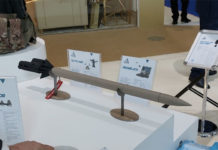Terrorism and unlawful activities have prevailed and flourished in the modern information age, with criminal activity rapidly adapting cyberspace as safe haven for illicit activity. Historically, national intelligence agencies have relied on the monitoring of public telephone networks, by establishing and performing ‘legal eavesdropping’ on physical telecommunications and telegraph (PTT) ‘copper lines’.
These human- and hardware-intensive operations rapidly absorbed new technologies relying on land lines, such as fax, but were slow to encompass wireless communications and the internet, leaving these areas vulnerably uncovered.
Following huge investments in infrastructure, as part of the global war on terror and, with the related fight against money laundering and financial support of terrorist activities, these gaps became quite effectively bridged. Presently, most modern countries are well equipped to effectively monitor the all types of communication in their territory.
But this effort is never ending. Rapid advances in telecommunication and Internet Protocol (IP) technologies constantly challenge law enforcement and intelligence agencies around the world in a relentless race. Wireless telephony, broadband multimedia communications and entertainment services, are rapidly expanding to reach the majority of individuals in the developed and developing countries. Engaging customers through a multitude of interactions, such services are exploited by strategic and tactical monitoring systems, developing unprecedented knowledge of individual behavior and group activity, which can be assessed in real-time or by analyzing historical data, to seek meaningful trends and behavior patterns indicating suspicious activity. Added with DNA profiling and other biometric identification and financial transactions, tracked through credit-card companies and facial recognition of customers at points of sale, are all adding, up to a whole new world, where no one can hide and everyone could become a potential suspect.
‘Target interception’ refers to the interception of a known target and is typically performed in real-time, according to criteria such as email address, or phone number. However, in many intelligence scenarios, targets remain unidentified. Using ‘Mass Interception’, intelligence agents identify unknown suspects, spot new activities, completing the intelligence picture. Mass interception refers to the potential, tracing of all network communications, enabling intelligence agents to extract clues from the retroactive analysis of large volumes of past communications. Mass interception systems can access such networks by monitoring the trunks at the operator’s facility, or via microwave and satellite surveillance.
In the past, authorities required legal warrants to access and tap the physical communications lines. Today, exploiting wireless connections, through microwave links, wireless local area networks, cellular broadband and the upcoming WiMAX wireless broadband mobile links, authorities are able to tap into the new media ‘of the air’ with relative ease, monitoring GSM, CDMA, Satellite Communication and Computers Communication. Such activities can be done without the subscribers’ awareness or knowledge. Furthermore, physical networks sofar considered relatively safe to unauthorized eavesdropping, can now be monitored by stealthy ‘probes’ – using bugging devices, capable of seeping the entire traffic over broadband channels, analyzing the traffic in search of suspicious traces of data – such as words, phrases and names. Other methods utilizing stealthy ‘Trojan horses’ empower cell-phones, personal digital assistants (PDA) and PCs, without their owner’s knowledge, turning these personal communicators into active eavesdropping devices.
Military grade COMINT solutions were traditionally employed by national security agencies, in counter-espionage operations, to ‘fish’ spies. Currently, security agencies, law enforcement and government agencies require such services for daily operations, monitoring, locating and tracking wireless systems, from licensed trunk radios to wireless, cordless phones, intercepting, tracking and localizing electronic signals that could trigger explosive devices, or tracking phones involved in criminal activities. Modern COMINT systems comprise the receivers, mapping, decoding, and decompressing subsystems, handling the intercepted transmissions and analysis tools, to interpret signals and content in real time. Services are enhanced with link, location, and other analytics that link the COMINT interception with information gathered from other sources.
Israeli companies are prominent worldwide for their unique and powerful communications monitoring equipment. Such systems have been deployed with many government agencies worldwide, as national security assets, as well as for the use by law enforcement agencies. More recently, the technology was ‘scaled down’ to meet the requirements of emergency call- centers, such as the 911 in the U.S., for which powerful systems were developed, to improve public service, by developing better situational understanding and location tracking, while providing better analytic tool in support of law enforcement investigations.




















